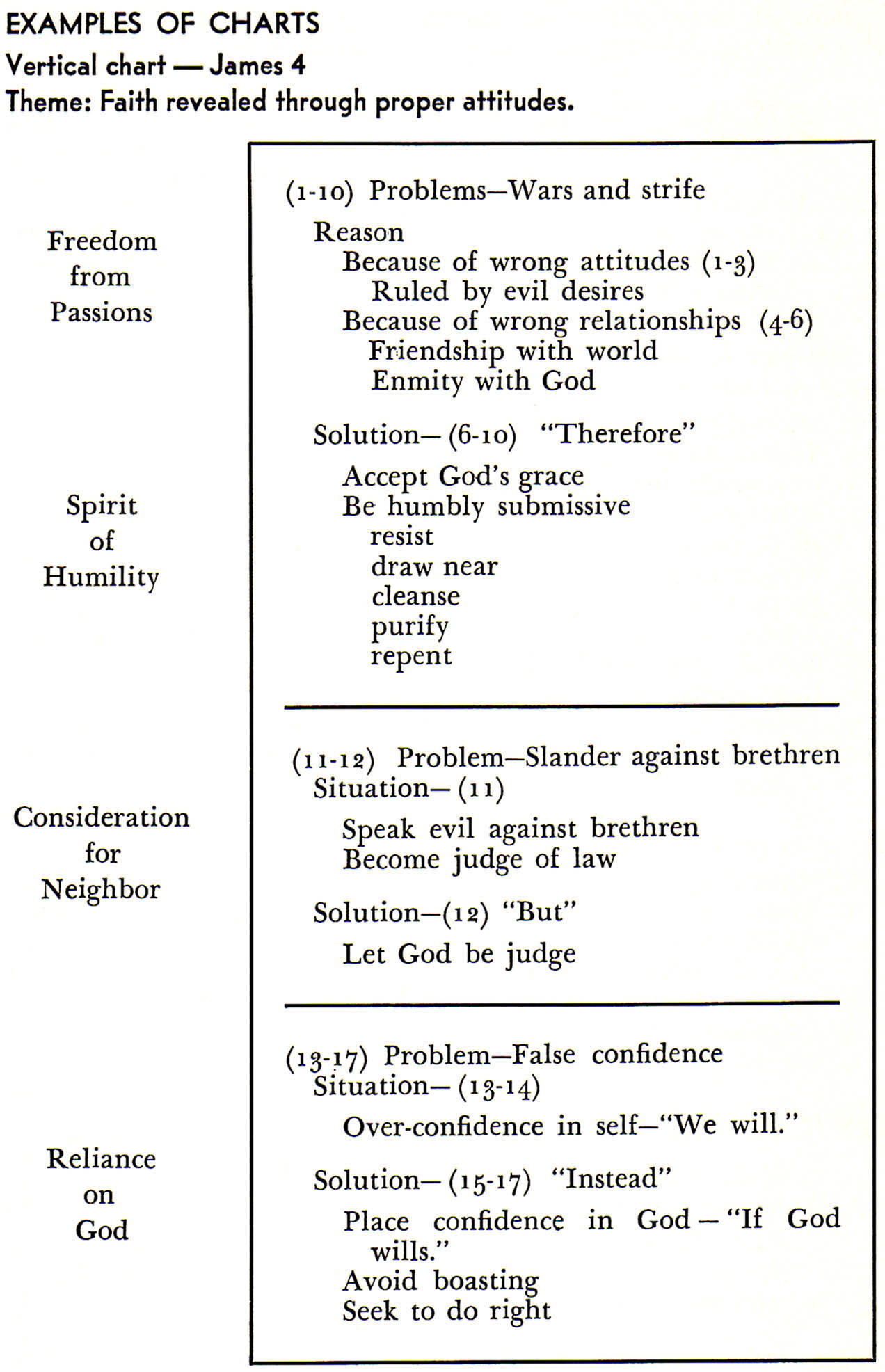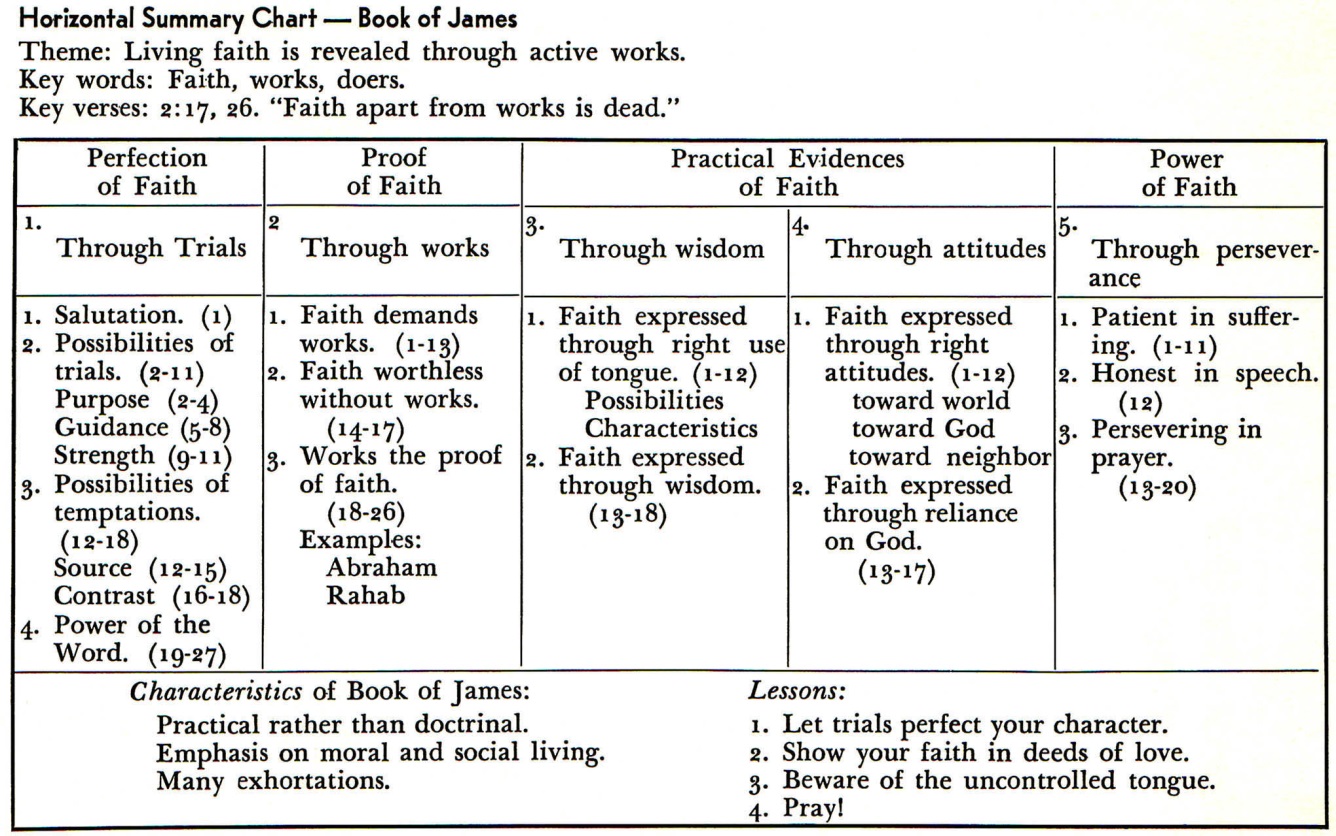
Methodical Principles
SUMMARIZING

Methodical Principles
SUMMARIZING
“I am finding that my powers of observation have been sharpened, but I am still having trouble analyzing the structure of a passage and summarizing the main teachings? What is the value of charts and outlines? What should they include?”
Importance of Summarization
In a previous lesson we discussed the importance of observing the way an author has arranged his material as well as observing what he said. Until having insight into both content and structure of the Biblical material, you cannot fully understand the author's purpose for writing. A summary should reveal both content and arrangement of the Bible passage.
Summaries help crystallize major teachings and are an aid to memory. Always keep the “parts” related to the “whole.”
Relate verses to the whole paragraph
Relate paragraphs to the whole chapter
Relate chapters to the whole book
Relate individual truths to the whole message
In the lesson, “Observing the Whole,” we discussed the use of structural diagram and charts in order to analyze arrangements and summarize content. In this lesson we will consider ways to summarize, use outlines, diagrams and charts.
General Ways to Summarize
Book chart
When studying a book, make a horizontal chart, blocking off a space for each chapter. Give a title to each chapter. Group the chapters into divisions according to their content. Title the divisions. List the main teachings and characteristics of the book.
Chapter chart
When studying a chapter, make a horizontal or vertical chart for each chapter, giving each paragraph a factual title. After you have studied the chapter more thoroughly, give an interpretive title as well. List the main teachings in the chapter.
Paragraph chart
Chart or diagram the main teachings in any paragraph which demands special study.
Topical chart
If your Bible study is topical in nature, make a chart to show the various aspects of your topic. For example, if you are considering the topic of prayer, you might chart your findings according to these phases: prayer admonitions; prayer promises; conditions for answered prayer.
Outline
List the main and subordinate points in a logical or topical outline.
Brief statement
In a short statement or brief paragraph, summarize the author’s purpose or the content of a paragraph or chapter.
Paraphrase
Write the content of a paragraph or chapter in your own words. Follow the text and try to paraphrase it with the language of today.
Summarization by Means of Outline
The outline is one of the most common ways to summarize the main points of a passage. The major and subordinate points are listed in succession and designated by numerals: I, A, 1, a, (1), (a). The purpose of the outline is to show in skeleton form the major ideas in a message. An outline may be “logical” or “topical” in nature.
1. Logical outlines – The points are listed in a natural sequence in which one point is built upon the previous point. The logical outline may be compared to a series of steps leading to an ultimate conclusion.
2. Topical outlines – In this type the points listed are more or less equal in value and reveal parallel aspects of one topic. The topical outline may be compared to a wheel, in which each statement is like a spoke pointing toward the “hub” idea.
Reminders in making outlines
1. If you have sub‑points under your main points, it is best to have at least two. If there are not two subordinate ideas, then incorporate the one point into the main heading.
2. The literary construction of your points should be similar in construction. If you use a sentence in one of your main headings, use sentences for all main headings which are equal in importance. If you use one type of phrase for one sub‑point, use the same type for all sub‑points.
3. Your statements may be “descriptive” or “interpretive” in nature. Descriptive: similar to words in the text. Interpretive: statements revealing insight into the meaning.
Example of outline: James 1:12‑1
I. The promise concerning trials (v. 12)
A. Basis for receiving promise: steadfastness
B. Reward: crown of life
C. Requirement: love to God
II. The warning concerning temptation (vv. 13‑15)
A. Misconception of temptation: from God
B. Source of temptation: from selfish desires
1. First step: Temptation created by desires
2. Second step: Desire gives birth to sin
3. Third step: Sin brings forth death
Note the similarity of the word construction of primary and secondary points. Note the use of both descriptive and interpretive statements.
Summarization by Means of Diagram
The term diagram may cause confusion to some, especially since we have used it previously in our treatise on ways to observe structure in the lesson on “Improving.” We used the term diagram when describing a way in which you could arrange word units of a paragraph so that you could more easily observe the structure and content.
The term diagram means to set before the eyes an arrangement of ideas. In our first practice of diagramming, we wrote on paper all of the words in a paragraph. In a summary diagram, we list only the principal ideas of a paragraph or chapter. It differs from an outline in that it is more informal in nature. It differs from a chart in that it is not boxed by lines.
Example of summary diagram
Re‑read James 1:26, 27. The content of these verses can better be understood if the ideas are analyzed according to their relationships. The summary diagram is a simple way to place truths of the passage in graphic form.


